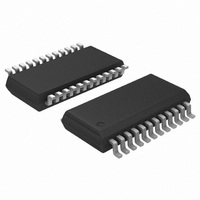ADT7463ARQZ ON Semiconductor, ADT7463ARQZ Datasheet - Page 21

ADT7463ARQZ
Manufacturer Part Number
ADT7463ARQZ
Description
IC REMOTE THERMAL CTRLR 24-QSOP
Manufacturer
ON Semiconductor
Series
dBCool®r
Datasheet
1.ADT7463ARQZ-REEL.pdf
(52 pages)
Specifications of ADT7463ARQZ
Function
Fan Control, Temp Monitor
Topology
ADC, Comparator, Fan Speed Counter, Multiplexer, Register Bank
Sensor Type
External & Internal
Sensing Temperature
-40°C ~ 120°C, External Sensor
Output Type
SMBus™
Output Alarm
No
Output Fan
Yes
Voltage - Supply
3 V ~ 5.5 V
Operating Temperature
-40°C ~ 120°C
Mounting Type
Surface Mount
Package / Case
24-QSOP
Lead Free Status / RoHS Status
Lead free / RoHS Compliant
Available stocks
Company
Part Number
Manufacturer
Quantity
Price
Part Number:
ADT7463ARQZ
Manufacturer:
ADI/亚德诺
Quantity:
20 000
Company:
Part Number:
ADT7463ARQZ-REEL
Manufacturer:
ONSEMI
Quantity:
2 785
Part Number:
ADT7463ARQZ-REEL
Manufacturer:
ON/安森美
Quantity:
20 000
Status Register 1 (Reg. 0x41)
Bit 7 (OOL) = 1, denotes a bit in Status Register 2 is set and
Status Register 2 should be read.
Bit 6 (R2T) = 1, Remote 2 Temperature High or Low Limit
has been exceeded.
Bit 5 (LT) = 1, Local Temperature High or Low Limit has
been exceeded.
Bit 4 (R1T) = 1, Remote 1 Temperature High or Low Limit
has been exceeded.
Bit 3 (5V) = 1, 5 V High or Low Limit has been exceeded.
Bit 2 (V
Bit 1 (V
Bit 0 (2.5V) = 1, 2.5 V High or Low Limit has been exceeded.
Status Register 2 (Reg. 0x42)
Bit 7 (D2) = 1, indicates an open or short on D2+/D2– inputs.
Bit 6 (D1) = 1, indicates an open or short on D2+/D2– inputs.
Bit 5 (F4P) = 1, indicates Fan 4 has dropped below minimum
speed. Alternatively, indicates that THERM limit has been
exceeded if the THERM function is used.
Bit 4 (FAN3) = 1, indicates Fan 3 has dropped below mini-
mum speed.
Bit 3 (FAN2) = 1, indicates Fan 2 has dropped below minimum
speed.
Bit 2 (FAN1) = 1, indicates Fan 1 has dropped below mini-
mum speed.
Bit 1 (OVT) = 1, indicates that a THERM overtemperature
limit has been exceeded.
Bit 0 (12V/VC) = 1, 12 V High or Low Limit has been
exceeded. If the VID code change function is used, this bit
indicates a change in VID code on the VID0 to VID5 inputs.
SMBALERT Interrupt Behavior
The ADT7463 can be polled for status, or an SMBALERT
interrupt can be generated for out-of-limit conditions. It is
important to note how the SMBALERT output and status bits
behave when writing Interrupt Handler software.
REV. C
CC
CCP
) = 1, V
) = 1, V
Figure 22. Status Register 2
Figure 21. Status Register 1
MONITORED THROUGH STATUS REG 2
CC
OOL = 1 DENOTES A PARAMETER
CCP
High or Low Limit has been exceeded.
High or Low Limit has been exceeded.
F4P = 1, FAN4 OR THERM
OOL
TIMER IS OUT-OF-LIMIT
R2T
IS OUT-OF-LIMIT
D2
10000000
D1
00100000
LT
F4P
R1T
FAN3
Read/Write
Read/Write
5V
FAN2
V
CC
FAN1
V
CCP
2.5V
OVT
12V/VC
(Click
Digits)
(Click
Digits)
Rev. 4 | Page 21 of 52 | www.onsemi.com
–21–
TEMPERATURE
Figure 23 shows how the SMBALERT output and “sticky” status
bits behave. Once a limit is exceeded, the corresponding status
bit gets set to 1. The status bit remains set until the error condi-
tion subsides and the status register gets read. The status bits are
referred to as sticky since they remain set until read by software.
This ensures that an out-of-limit event cannot be missed if software
is polling the device periodically. Note that the SMBALERT
output remains low for the entire duration that a reading is
out-of-limit and until the status register has been read. This
has implications on how software handles the interrupt.
HANDLING SMBALERT INTERRUPTS
To prevent the system from being tied up servicing interrupts, it
is recommend to handle the SMBALERT interrupt as follows:
1. Detect the SMBALERT assertion.
2. Enter the interrupt handler.
3. Read the status registers to identify the interrupt source.
4. Mask the interrupt source by setting the appropriate mask
5. Take the appropriate action for a given interrupt source.
6. Exit the Interrupt Handler.
7. Periodically poll the status registers. If the interrupt status bit
TEMPERATURE
SMBALERT
HIGH LIMIT
SMBALERT
HIGH LIMIT
“STICKY”
bit in the interrupt mask registers (Reg. 0x74, 0x75).
has cleared, reset the corresponding interrupt mask bit to 0.
This causes the SMBALERT output and status bits to be-
have as shown in Figure 24.
STATUS
Figure 24. How Masking the Interrupt Source Affects
SMBALERT Output
“STICKY”
STATUS
Figure 23. SMBALERT and Status Bit Behavior
BIT
BIT
TEMP BACK IN LIMIT
(STATUS BIT STAYS SET)
TEMP BACK IN LIMIT
(STATUS BIT STAYS SET)
INTERRUPT
MASK BIT SET
(SMBALERT REARMED)
INTERRUPT MASK BIT
ADT7463
(TEMP BELOW LIMIT)
CLEARED ON READ
(TEMP BELOW LIMIT)
CLEARED ON READ
CLEARED











